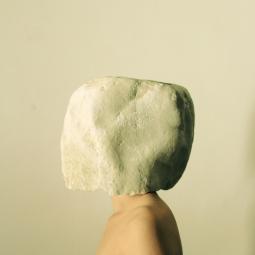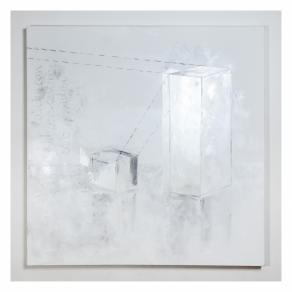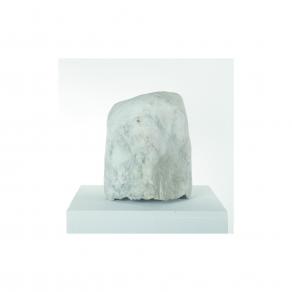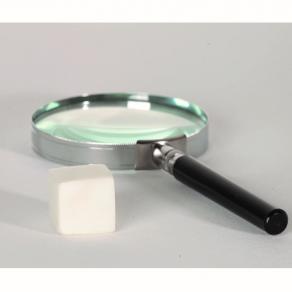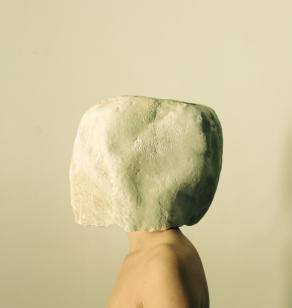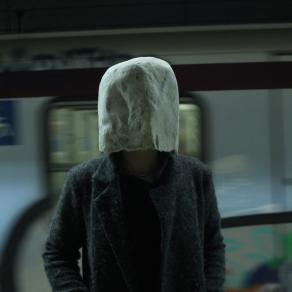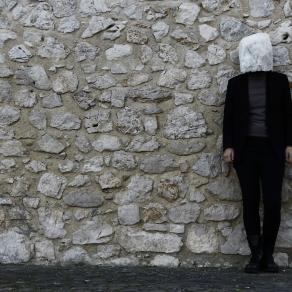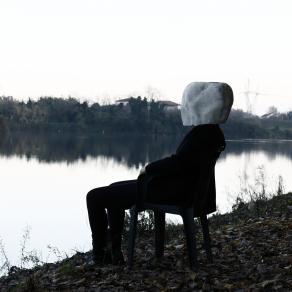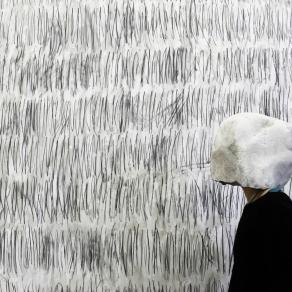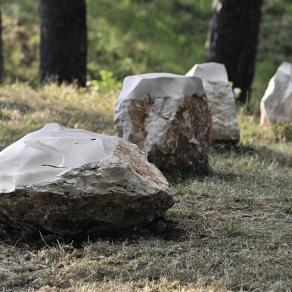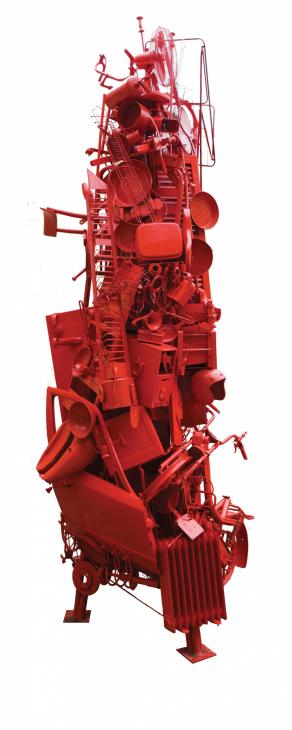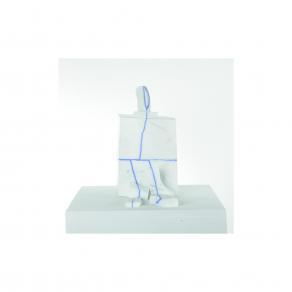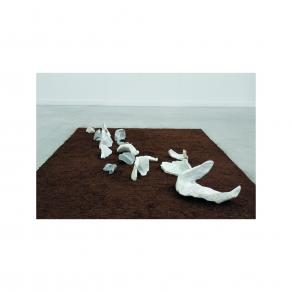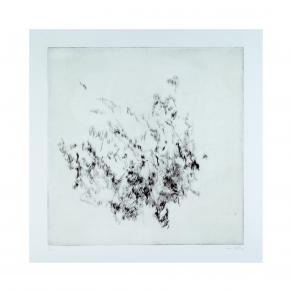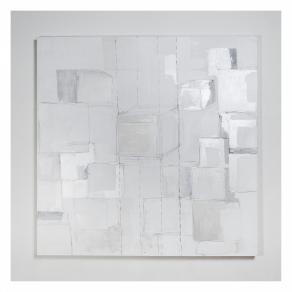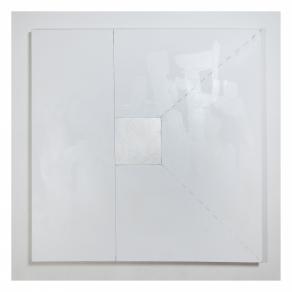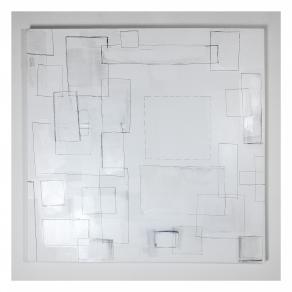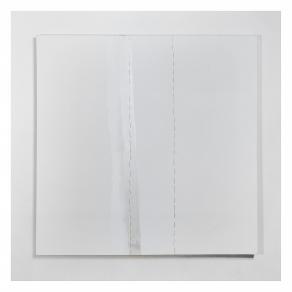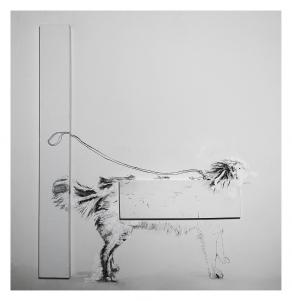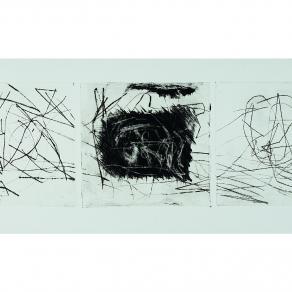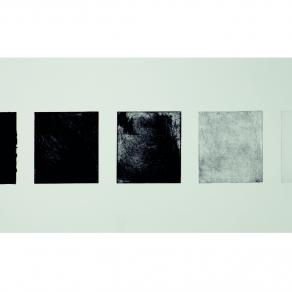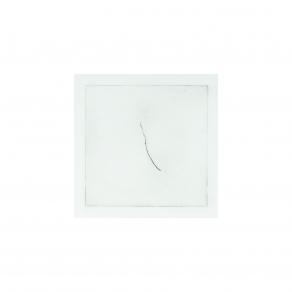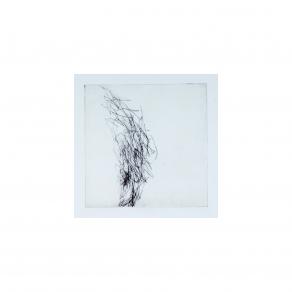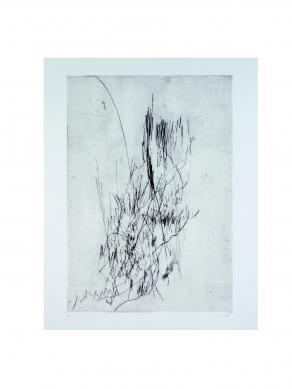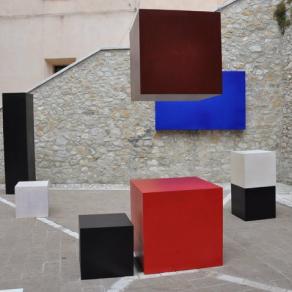Sara Ciuffetta
Artist, Berlin, Germany, joined 11 years ago
Spring cleanings
The more we immerse ourselves in ourselves, the more open we become, since the closer we get to the germ of our totality, the closer we are to the germ of totality of all men.
Piero Manzoni
Sara Ciuffetta listens to the others but she has a hearing problem.
Sara Ciuffetta believes in relationships with other people, who are part of a path of life, growth and research.
Sara, in her works, tells a lot about herself.
Sara needs to be surrounded with a lot of people, breathe the air of a community (or many communities), which very often she contributes to create and preserve.
Sara spends long moments in solitude.
Sara passed a long period in Berlin and hopes to go there more often. Or maybe she works to live there permanently.
Sara has started working with painting but she has found other expressive ways in installation, sculpture and sign, the appropriate materials to visualize thoughts and ideas. But this is part of the professional life of so many artists in our present epoch.
This exhibition, like the vast majority of Sara Ciuffetta’s research, develops like an
autobiographical tale. A sort of indirect portrait which puts into the foreground desires, melancholy, frustrations and then conquests, admissions and requests. Of a person, of an artist, who develops her own autobiography starting from a restless question asked by both men and women: which is my place among others? Which is everyone’s place?
Photos, sculptures, paintings, engravings, all realised in different periods, exhibit a path which shows the continuous struggle between taking care of herself and taking care of a collective “us”. A path that, instead of certainty, gives fragmentary points of view which move among matters concerning the individual responsibility towards others and the world – a world of nature and environment – and the necessity of taking care of herself and taking herself and her image in the foreground.
An exhibition which moves on these theatrical progressive wings, on a focus immediately lost and found again somewhere else, on moody oscillations which, as the title declares, need meditation, continuous rethinking and cleaning. Spring cleanings: wardrobes are opened, dust is removed and objects are replaced. To later face another period of gradual accumulation.
Spring cleanings is studded with a series of self-portraits, sometimes indirect. Sara is in the photos but Sara is also that tiny cube in Self-portrait (2014) and Self-portrait (I try to be rational) (2014).
In order to observe the first better, one must bend his knees and hold a magnifying glass. Just in case a close observation interests somebody and a little time and a little effort might be worth it.
Sara depicts herself in Walking with Argo (2013), her dog. In fact Argo is there, depicted, but not Sara. The lead is suspended. Sara is summarised in a rectangle with the same measures of her profile: base for height, cm 170 x 20. As if the dog could be represented, drawn, depicted because it is part of a natural world, whereas the human being remains an unknown, a mystery. He cannot be portrayed because it is hard to give him an outline. The man creates restlessness, a sort of discomfort. It is hard to find a place for him in the world. Because, first of all, effort and discomfort are his.
The sequence of portraits that belongs to the series Soft Hearing (2012) (which includes sculptures and graphic as well) visualizes individuals and the relationships within this space. A space that is two-dimensional in painting and in other occasions, that same concept of space, for Sara Ciuffetta is defined as the place of relationships.
On the occasion of the realization of Monument to alive (2011), an installation of public art in the sense of public participation (unfortunately, due to political issues the public location has not been found yet, a very frequent problem in Italy), the inhabitants of Frosinone (Italy) were asked by Sara Ciuffetta to offer an object full of memories.
The objects, all painted with the same red and made almost metaphysical, have been assembled in a sort of big obelisk, a monument to the desires of the alive, a warning to the society of desires and generosity, memories in the present and relationships. In a city where there are few works of public art (taking into consideration also the wasted Monument to the Fallen of every war by Umberto Mastroianni), a very few “cultural assets”, which remind how communities can produce thought through architecture and sculpture but a city still able of generous acts, curious and visionary forces.
In Soft Hearing behaviours are more evident than people. Some sorts of case studies and samples of spatial dispositions from which grasp suggestions and advice for the future. A sample of attitudes, prejudices, fears. A sample of human relationships seen from the individual in relation (and reaction) to the community. The choice of the square format for the canvas, cm 100 x 100, stands for the necessity to create a neutral space and it builds a kind of nearly scientific observatory, a geometric rule on human behaviours, which are studied, traced and measured.
The use of white and gray, traces, dotted signs and rethinks build a chaotic plot, like an
underground noise. Here passions, turmoil, anxieties, anguish are summarised and nearly domesticated by the attempt to “regulate” and measure them. Moreover, the title of the series recalls a type of hearing which has an original handicap or a quirk or a form of auto-defence. The soft hearing is Sara’s one but it is also the community’s, the totality of individuals whose ways, in these spaces, cross. The sculpture Ear Wax (2013) seems a warning to both history and the personal story of the artist, but also towards this attitude.
Sara has started to construct her own path of research with painting: an ancient need of spreading colour on canvas. A story of gesture and brush which states here its roots of study: first of all, Malevič and Suprematism. Manzoni’s monochromatism. The surface together with the concept.
Through an ancient technique, a conceptual meditation passions, moods, plots and feelings are discussed here: everything is cooled by a sort of microscopic analysis but being aware of our incapability of real listening.
Sara likes telling stories: she collects them and gives them back. Despite the rigid and severe appearance of her works, the narrative element is present in her sculptures, paintings, and graphics.
In her paintings, with that summary of human beings in geometric shapes, there is all the synthesis and narration which recalls Tales of two squares by El Lissitzky and some books by Leo Lionni.
The engravings (all of 2014) as well, included in the exhibit, are all conceived in series or as parts of a tale: the series dedicated to the gesture (Eyes closed), to the memory of time, places, situations (Condensation/hypnosis, During the sex), to the sustainability of the gesture – a sign able to create an image “coming to terms” with eye and brain, opening itself to the limitless potential (Beginning of an intention, A scribble is a meeting of many signs), asking for the collaboration of other people (Different signs).
In the series of photos I disguise myself as a stone (2014), Sara wears a helmet made of marble. The sculpture becomes a shield or eventually the extreme material visualization of a state of mind. The stone, a natural element, becomes a foreign element in urban contexts, domestic behaviours, but it cannot unify a disconnection even where the human figure is inserted in the world of nature (although anthropized).
A trace of the exhibition is dedicated to the collection of pieces of life, to unify them with signs which remind scarves, which do not hide the fractures, but make them a precious element of the sculpture itself (without camouflage with the stone veins, on the contrary highlighting a fact occurred in a specific place and time) and to the opening towards new experiences yet to come. The ends of this trace are the marble sculpture Element I: break, reconstruction, re-adaptation (2015) and the series of engravings Cleaning, realised cleaning gradually an inky plate.
Ilaria Mariotti
Translations (Stefania Tesser)
News
celeste,
